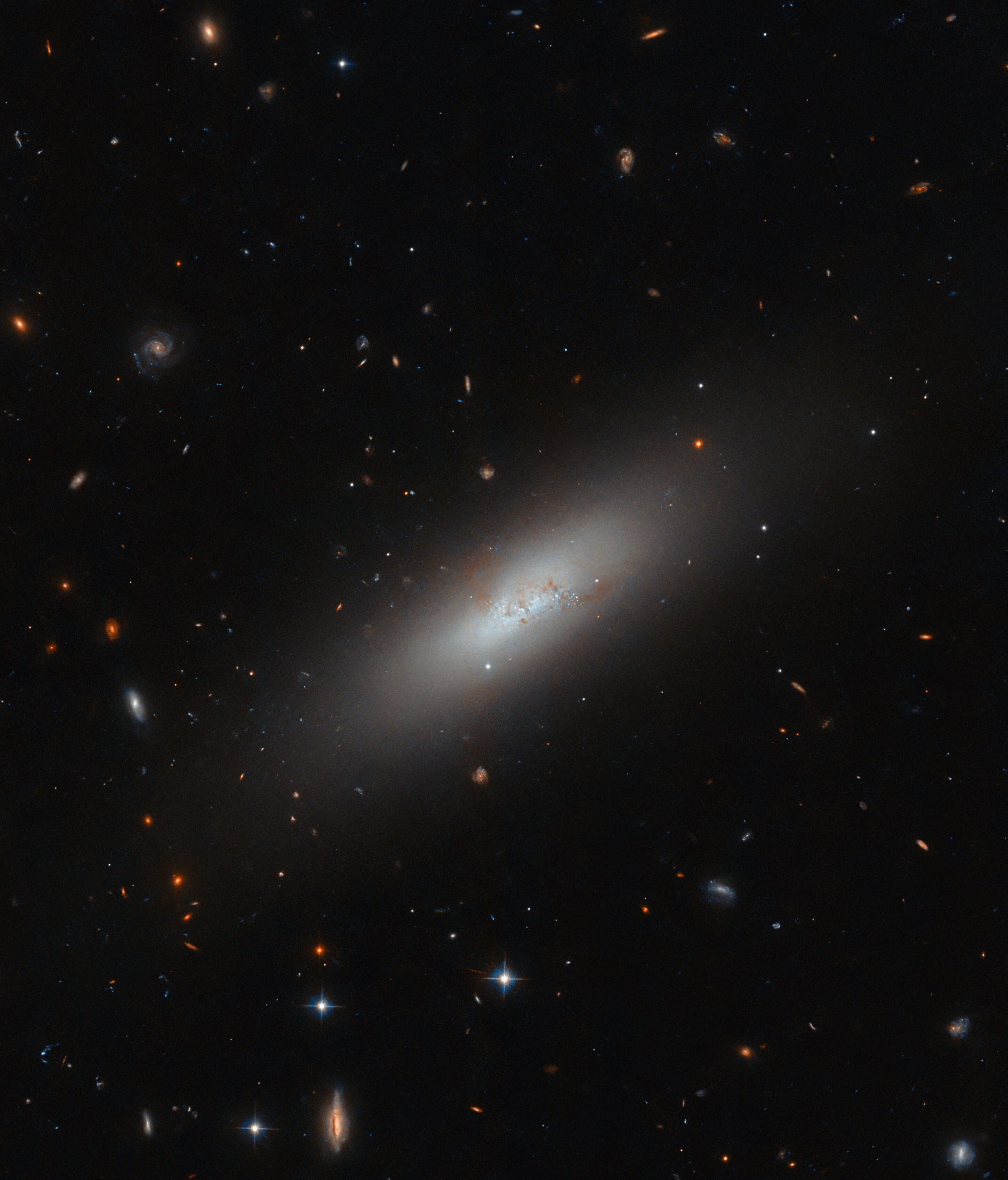2 min read

This NASA/ESA Hubble Space Telescope image reveals the subtle glow of the galaxy named IC 3430, located 45 million light-years from Earth in the constellation Virgo. This dwarf elliptical galaxy is part of the Virgo cluster, a rich collection of galaxies both large and small, many of which are very similar in type to this diminutive galaxy.
Like its larger elliptical cousins, IC 3430 has a smooth, oval shape lacking any recognizable features like arms or bars, and is missing much of the gas needed to form many new stars. Interestingly, IC 3430 does feature a core of hot, massive blue stars -an uncommon sight in elliptical galaxies - that indicates recent star-forming activity. Astronomers think that pressure from the galaxy ploughing through gas within the Virgo cluster ignited what gas IC 3430 had in its core to form the newer stars.
Dwarf galaxies are really just galaxies with fewer stars, usually less than a billion, but that is often enough for them to reproduce, in miniature, the same forms as larger galaxies. There are dwarf elliptical galaxies like IC 3430, dwarf irregular galaxies, dwarf spheroidal galaxies, and even dwarf spiral galaxies!






